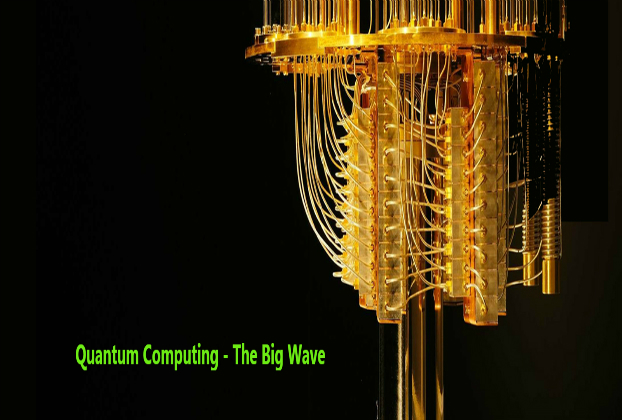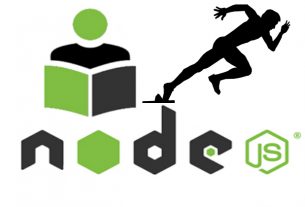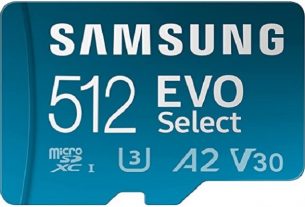There is a lot of hum about Quantum Computing in the tech. world, peculiarly since the last decade. Before we describe what actually Quantum computing is lets comprehend the traditional computing systems.
Limitation of Traditional a.k.a. Classical Computers
Traditional computers, the machines we use (or take advantage of) in our daily life including our laptops, desktops, servers, tablets, smart phones etc. have made our lives pretty comfortable, efficient and sophisticated. We certainly have achieved lots of things and the world has completely changed with the advent of computers a few decades back. But these computers have some serious limitations too.
Moore’s Law states, If, as the number of transistors on a microprocessor continues to double every 18 months, the year 2020 or 2030 will find the circuits on a microprocessor measured on an atomic scale. And the logical next step will be to create quantum computers, which will leverage the power of atoms and molecules to perform complex processing tasks.
The basic building block of a computer system is a “transistor”. A computer uses transistors to build logical switches or gates which either allow electric current to pass through them, i.e switch On or restrict the current flow, i.e switch Off. Many transistors are combined to form logic switches which in turn form useful modules that can do basic mathematical operations such as addition, subtraction and multiplication. With the intelligent coherence of many of such modules (ending up in one or more microprocessors) and clever programming we get a modern computer.
Over the time, the size of the transistor has become extremely small which allows us to fit literally millions of transistors onto a small chip and hence making it possible to build small portable computers with increased computing power, like smart phones and even tiny digital devices. But we are approaching a physical bottleneck of making the transistor further smaller. Today, transistor has already been minimized to the limit that it has achieved the size of 1 nanometer.
On an atomic measurement level, that is, less than 1 nanometer, the electrons behave eccentrically and do not follow the laws of physics that are normally applicable to larger objects. On the atomic scale, the electrons demonstrate Quantum tunneling effect, i.e., it sometimes behaves like a wave and passes through closed logical switches also – thus physically demolishing the basic logical switch structure. Since we cannot have a perfect transistor switch at such small sizes, we have reached the final limit of how many transistors we may put in the smallest possible area. So we must keep the transistors just big enough to avoid the Quantum Tunneling effect. This, in effect, holds us back from increasing the computation power of our computers any more.
What is a Quantum Computer?
A Quantum Computer is a machine built on the principles of quantum mechanics, that takes a new approach to processing information, thus making them much more powerful. Quantum computers use Qubits to process the information.
What is a Qubit?
The fundamental unit of processing and storing information in a today’s computer is a “bit” which can hold binary values (‘0’ or ‘1’). The analogous to the bit is the Qubit (short for “Quantum Bit”) in quantum computers. Qubits have special properties that help them solve complex problems much more faster than traditional bits. One of these properties is “Superposition” which states that instead of holding one binary value (“0” or “1”) like a traditional/classical bit, a Qubit can hold a combination of “0” and “1” simultaneously. When multiple Qubits interact in coherence, they can work out multiple options and process information in a fraction of the time compared to even the fastest super-computer of today. In fact, Qubits would have to be physically stored by atomic or sub-atomic objects like atoms, ions, or even electrons and photons.
A Qubit can exist in Superposition of zero and one; it can store a zero, a one, both zero and one, or an infinite number of values in between. They can also create a fairly complex superposition of 0 and 1 by interacting with other Qubits. The total number of superpositions that are possible with n Qubits is 2^n.
To learn more about Qubit visit these links:
https://en.wikipedia.org/wiki/Qubit
https://whatis.techtarget.com/definition/qubit
What is Superposition?
Superposition is the ability of a quantum object (atom, electron, photon etc.) to be in multiple states at the same time. This means something can simultaneously be “here” and “there,” or “up” and “down”. This odd behavior is only observed at an atomic level.
To learn more about Quantum Superposition visit:
https://en.wikipedia.org/wiki/Quantum_superposition
What is Entanglement?
Entanglement is a physical phenomenon, that is an extremely strong correlation, that exists between quantum particles. This correlation is so strong, in fact, that two or more quantum particles can inevitably be linked in perfect conjunction, even if separated by light years distance in the universe. This means a quantum state of each entangled particle cannot be described independent of each other. The participating particles are so interdependently connected, they can be said to “dance” in instantaneous, perfect unanimity.
The states of entangled Qubits cannot be described independent of each other. This means if we measure one Qubit then we also get some information about what will be the state of another Qubit when we measure that one. Chaining entanglement for computation is deemed to be an imperative ingredient for speeding up computation using quantum computers.
Superposition and Entanglement are two fundamental behaviors on which Quantum computing is based on.
The following short video will help you understand Quantum Entanglemnet.
https://www.youtube.com/watch?v=6yfWdb-JOA8
So, what could be the potential benefit of Quantum Superposition?
According to Dario Gill, Vice President of AI and IBM Q – “Quantum computing isn’t about building a faster computer, but it’s about building something fundamentally different.”
To appreciate the enormous advantage quantum superposition and entanglement can provide to computing, let’s consider the combined value of four classical bits. They can be in “one” of two to the power of four configurations, at a time, which means they can have one of the 16 possible combinations at a time.
In the case of Qubits, four of them can possess “all” of those 16 configurations at the same time. Point to be noted; this number grows exponentially with each extra Qubit added. At the time it reaches 20 Qubits, they can store a million values in parallel. Something really astonishing!!!
This characteristic together with “quantum entanglement” and “q-bit manipulation”, a quantum computer can do entire sets of calculations at the same time, as opposed to a regular computer doing them sequentially, that is, one after another.
Perhaps it is unrealistic to compare quantum and classical or traditional computing, but carefully speaking, a quantum computer with just a few hundred qubits would be literally enough to perform more calculations simultaneously than there are atoms in the known universe.
Quantum computers have the immense capability to revolutionize the discovery of new chemicals and other materials by making it possible to simulate the behavior of matter down to the atomic level. Or they could evert cryptography and cyber-security by cracking otherwise invulnerable codes. They have the potential to supercharge artificial intelligence by penetrating the data more efficiently.
Albeit, we are nowhere close to having a quantum personal computer that can be placed on your desktop and do daily tasks for you. May be that will never happen, as quantum computer chips and circuits require cryogenic freezing and temperatures lower than outer space.
The Quantum computer itself, as of today, is relatively small, but the cooling systems required to make it work are large enough. It actually requires a room full of cooling units, with vacuum pumps and refrigerators with liquid helium to get the temperature down to 10 to 15 milli-kelvins, which is colder than even outer space, which averages about 3 kelvins.
Recent Developments
Google unveils new Quantum Computing processor called Bristlecone
The researchers have been making major strides in quantum computing. The latest milestone in this field arrived with Google divulging their new quantum processor called Bristlecone.
One of the major goals Google has put forward in Quantum AI is to significantly reduce the error rate in quantum computers. If a quantum processor can operate with low enough error rate, it would be able to outperform a classical super-computer on a well-defined computer science problem, an achievement known as quantum supremacy.
According to Google “Bristlecone will be a compelling proof-of-principle for building larger scale quantum computers in future.”. However, operating a system such as a Bristlecone at low system error is extremely challenging and requires harmony between a full stack of technology ranging from software and control electronics to the processor itself. Getting this right requires careful system engineering over several iterations.
Microsoft’s take on Quantum Computing
“The next wave in the digital revolution is expected to come through quantum computing.”, stated by Satya Nadella, Microsoft CEO.
Till now, Microsoft has been concentrating on artificial intelligence and cloud computing. It will now focus on quantum computing said Nadella. “Despite AI, mixed reality and cloud, the real state of our computational problems is such that we still can not solve some of the hardest problems that we face as a society like producing food enzymes or conductors that ensure no loss of energy etc. These problems inspired us. We have been working with quantum. We are bringing in world-class Mathematicians, physicists, and scientists to work on it.”
Quantum computing at IBM
IBM Q is the key initiative to build universal quantum computers for business and scientific purposes. The multi-disciplinary team at IBM is developing scalable quantum system, and potential applications for the technology they endeavor to make available today. IBM Q quantum devices are accessed using Qiskit, a modular, open-source programming framework. IBM Q technology is available to a worldwide network of Fortune 500 companies, academic institutions, and startups to collaborate with IBM Research to advance quantum computing.
Several IBM Q quantum devices are available for public use and experiments, through the cloud, including 5- and 16-Qubit devices accessible for free through the IBM Q Experience and Qiskit.
In order to function correctly, quantum systems must be kept cold. A little heat in the system can cause error, which is why quantum computers are designed to function at temperatures close to absolute zero, colder than the vacuum of space. Here is evident that how a quantum computer’s dilution refrigerator, made from more than 2,000 components, exploits the mixing properties of two helium isotopes to create such a cold environment for the Qubits.
So what makes the difference?
Quantum computers are, by no means, a replacement for traditional computers. They are a different tool to resolve specific problems for which the traditional super-computers even may take months, years, or in some cases several decades to resolve. Instead of bits, a quantum computer uses quantum bits or Qubits.
Thanks to parallelism; quantum computer can work on a million computations at once, while a desktop PC works on one. A 30-qubit quantum computer equals the processing power of a conventional computer that could run at 10 teraflops, that is, trillions of floating-point operations per second. A typical desktop computer today runs at speed measured in gigaflops, that is, billions of floating-point operations per second. So the difference in performance makes sense.




